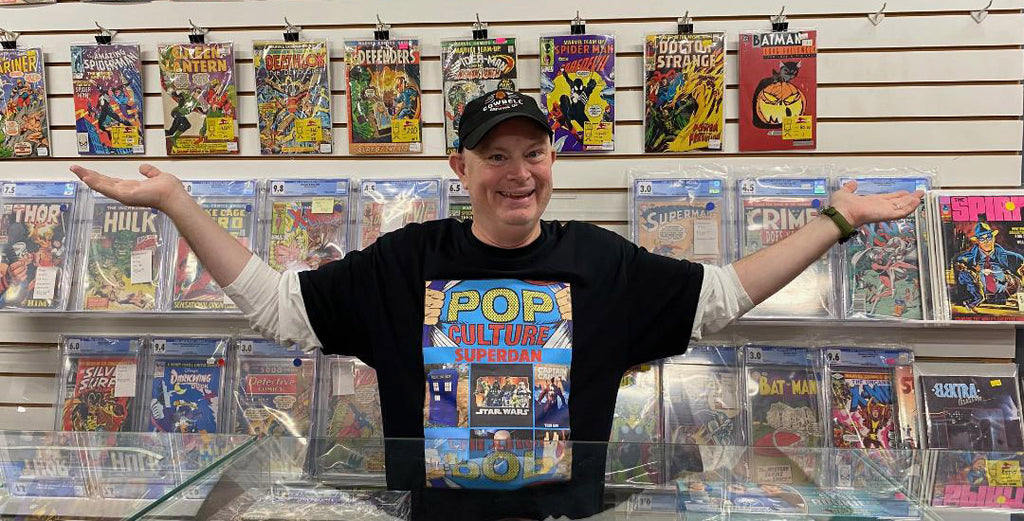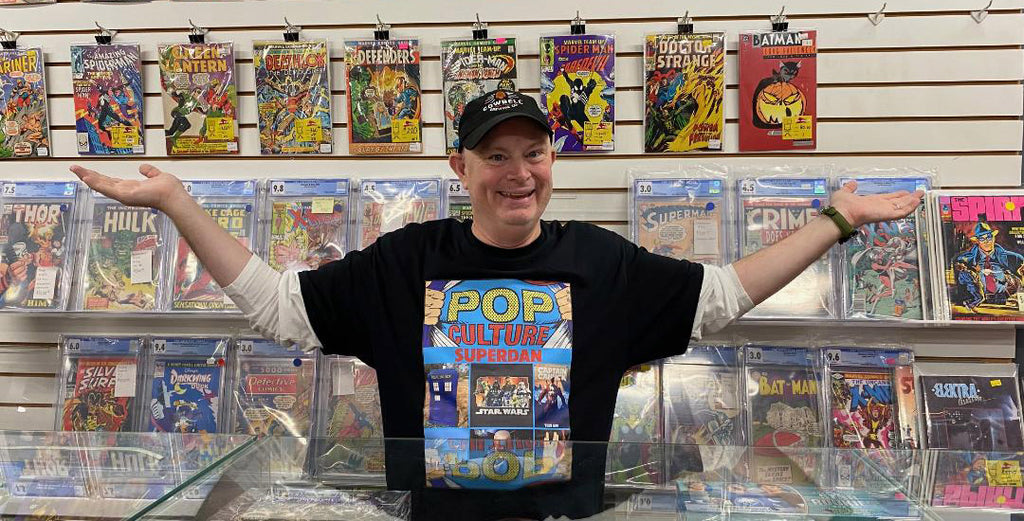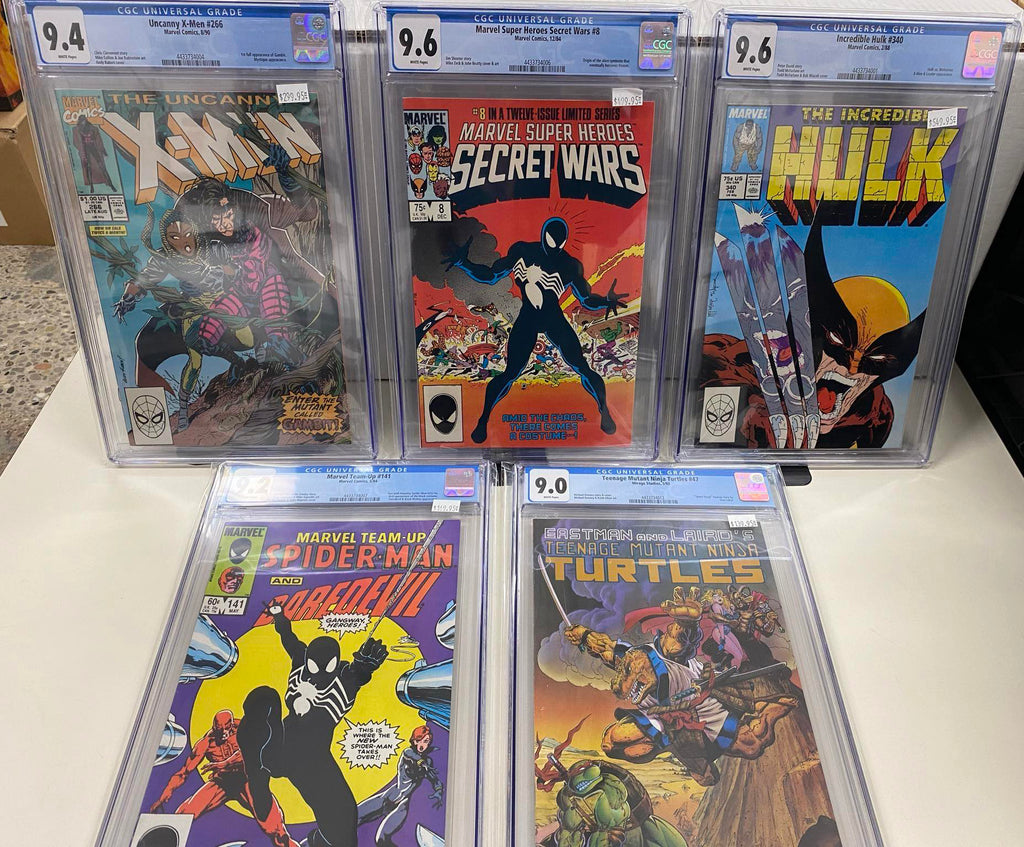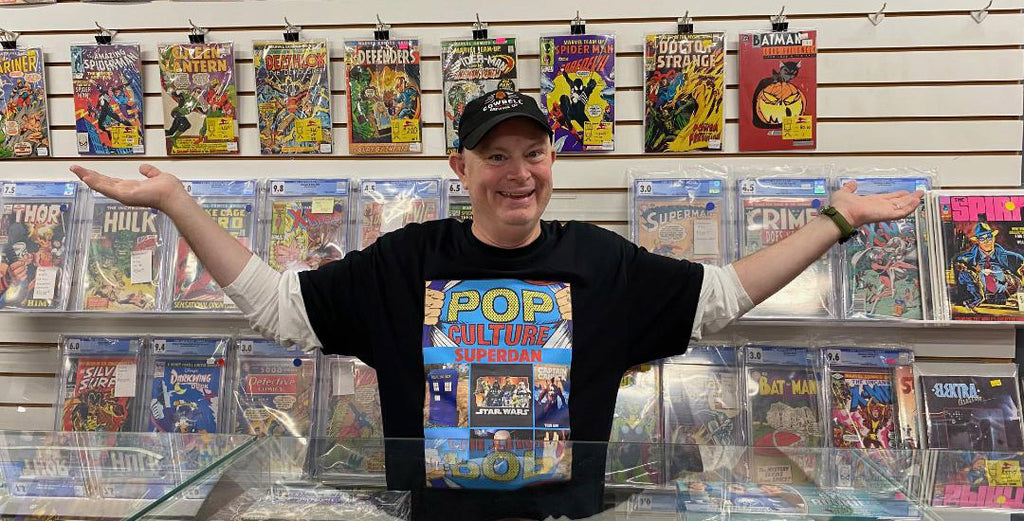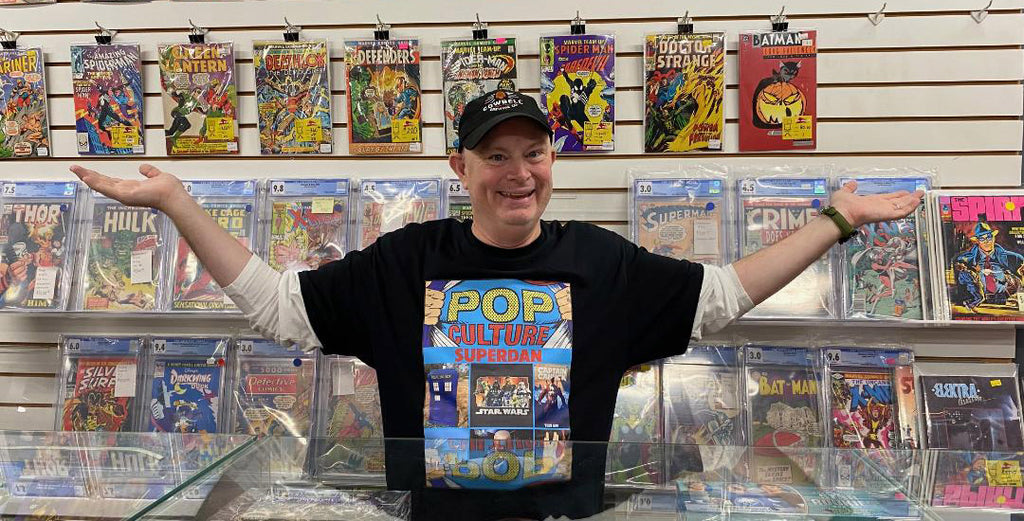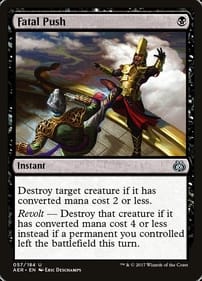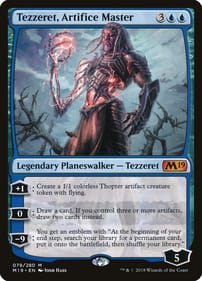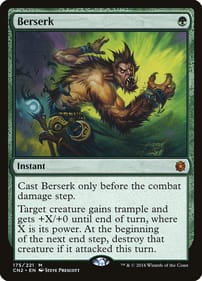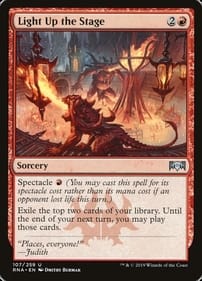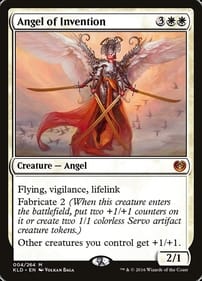The Marvel Universe: An appreciation
By Dan Brown Did you ever have one of those posters showing all the Marvel superhero characters gathered together in one place? Over the decades, successive generations of Marvel artists have depicted that crowded scene – row after row of colourful do-gooders, a cast of literally thousands, standing at the ready to fight evil.. Whether this heroes’ gallery was drawn by Jack Kirby, John Byrne or Michael Golden or someone else, my jaw hits the floor every time I see it. I am in awe of the creative energy it must have required to come up with backstories and costumes for all of them. So what I want to do this week is take a moment to praise the folks at Marvel for doing such a good job of churning out one interesting character after another since 1939. This will come as no surprise to regular readers who know I was raised on Marvel Comics in the 1970s. (And don’t worry, DC fans, I’ll do a tribute to that company’s stable when I figure out the right way to do it.) When it comes to being prolific, no other comic publisher has the track record Marvel does. What a riot of invention! What a unique assemblage of talent! What a big bang of creativity that set and kept the Marvel Universe in motion! The Marvel Universe is what results when the right talented people get together and are allowed the freedom to let their minds wander. It’s an example of what no less an authority than Willy Wonka calls “pure imagination.” Jack Kirby and Stan Lee – who launched such comics as the Avengers, the Fantastic Four, the Incredible Hulk and the Uncanny X-Men – were undeniably the creators among creators at Marvel. I don’t want to get too much into the weeds on the question of which man possessed the real vision, so let’s just state for our purposes here today that Kirby and Lee combined are among the greatest and most prolific American originators of characters, in the same league as Walt Disney, Jim Henson, Dr. Seuss and Mark Twain. It’s true the different creative teams at Marvel were motivated by economic necessity. They never met a trend they didn’t try to plunder, like the disco craze. No sooner, it seemed, had Studio 54 opened than Marvel came up with the mutant Dazzler – who has all the powers of a disco ball! When kung fu movies likewise hit it big, Marvel answered with Shang-Chi and Iron Fist. Sometimes the plundering was done for the right reasons, as when characters like Black Panther and Power Man were devised to give black readers heroes of their own. Although some fans have by now grown weary of the offerings from Marvel’s movie division, the studio hasn’t even begun to scratch the surface of the vast library of characters it owns. No one would call the comic-book Agatha Harkness a major Marvel character, but there’s currently an entire series streaming right now devoted to her solo adventures. A series about Wonder Man – another B-list character – is set to debut next year. As someone who appreciates and values imagination, I can’t help but be deeply impressed by how productive Marvel has been over the decades, creating a surplus of diverse characters who have now become recognized around the world. And yes, the chumminess of the Marvel Bullpen was likely an illusion created by Lee to help infuse the Marvel brand with an air of fun, but at the end of the day we are still left with what all of those artists, writers, colourists, letterers and editors wrought: An entirely original group of compelling heroes. There’s literally a character for everyone. I stand in awe. Dan Brown has covered pop culture for more than 31 years as a journalist and also moderates L.A. Mood’s monthly graphic-novel group.
Steal This Idea
Let's have a place where comic fans, comic creators and the professionals who study comics could all gather to share their love for the medium.
Read The StoryNo Better Alien Comic than the Original
By Dan BrownThere have been many comics based on the Alien film franchise, but there is none better than the original Alien: The Illustrated Story.Gorgeously and creepily drawn by legendary artist Walt Simonson and written by steady hand Archie Goodwin, no less an authority than Frank Miller said “it might just be the only successful movie adaptation ever done in comics.”Originally published by Heavy Metal, the book was re-issued by Titan Books in 2012 and is worth hunting down in the runup to the release of the latest chapter in the franchise, Alien: Romulus, landing in theatres on August 16.The Illustrated Story adapts the 1979 Ridley Scott film. I was 11 years old when that movie was released, so I couldn’t see it in theatres. This comic was one of the ways – along with the novelization and fan magazines – I came to understand what the fuss was about. Keep in mind, at the time there were stories of people going to see Alien and throwing up in the theatre because of the unsettling gore. Older kids told me Alien gave them weird dreams.Unlike other film adaptations, such as Marvel’s ongoing Star Wars title, Simonson was not legally prevented from drawing the characters as they looked on screen. So that level of detail adds to the comic’s impact.In addition, it was clear Simsonson and Goodwin had actually seen a cut of Alien before they attempted their adaptation. But the highest compliment I can pay the creative team is how they took what worked from the movie and translated it into terms that worked for a comic.For example, in the scene where the Nostromo crew cut into the face-hugger in the sick bay, Simonson uses a long, vertical panel to show how the creature’s acid blood drips through the different levels of the doomed vessel.Simsonon’s rough lines were also perfect for capturing the gritty feeling of Scott’s motion picture. When the adult extraterrestrial finally appears, it towers over the individual crew members as it attacks – a licence taken with the visuals from the film, where it appears only in glimpses until the end of the story.There’s also judicious use of splash pages, like the full-page panel that shows the chest-burster violently emerging from Kane’s body. It gets the point across: There was blood everywhere.Even better, in select panels Simsonon frames them with the same blend of organic and mechanical elements that Scott used to create such a creepy atmosphere on the big screen.You may be wondering, since the creators involved were both veteran Marvel hands, why was this book published by the adult Heavy Metal? After all, in the 1970s Marvel wasn’t shy about using the latest fad to boost the company’s sales. Why not try to jump on the Alien bandwagon?I’m guessing Stan Lee and company were afraid to come out with a comic that was so bloody and had adult language. In 1999 I interviewed Harry Dean Stanton, the actor who played Brett, and he told me Scott wanted his actors to sound like “space truckers,” not noble PG Jedi Knights with their “outer-space attitude.”For diehard Alien fans, there’s also a moment near the end of The Illustrated Story I have not seen discussed anywhere in supplementary books or commentary tracks.As Ripley runs toward the lifeboat, she encounters the xenomorph sitting in a hallway. It has wrapped itself up into its own body, kind of like how a cat sleeps in a ball, except it’s almost a perfect cube. Ripley watches in horror as it slowly unfolds into its regular form. Was this a scene from an earlier cut of the movie Simonson and Goodwin got to see? I have never seen it addressed anywhere else in Alien lore (although there is a deleted scene of Dallas and Brett suspended in an Alien cocoon begging Ripley to mercy-kill them, which she does with her flamethrower).Even though it’s set in the future, to read this adaptation is also to be transported into the past, specifically the 1970s. Diehard Alien fans will know that in the original film, the crew’s employer is only referred to as “the company.” This was later modified in sequels to be the Weyland-Yutani Corporation. But by having it as an unnamed entity, the film plays on the anti-corporate sentiment that was in the air back then in many 1970s paranoid thrillers. Alien did the unlikely. It took a cliched plot – hapless spaceship crew must respond to distress signal, then is slowly picked off by star beast that is actually a guy in a rubber suit, with audience never knowing who the next victim will be – and created something fresh out of those hackneyed elements.Alien: The Illustrated Story is also an unlikely success by virtue of being the comic version of a landmark film that is not only a faithful adaptation, but worth reading for its own sake as well.Oh, and for the record, it appears Marvel may have learned its lesson: There will be Alien: Romulus prequel one-shot coming out October 24 that depicts the events that set the plot of the new sequel in motion. Dan Brown has covered pop culture for more than 31 years as a journalist and also moderates L.A. Mood’s monthly graphic-novel group.
New Comic Collection to be Released In Store Saturday, July 13
This collection includes classic CGC graded and non-graded issues, first appearances, and more.
Read The StoryWhat Makes A Comic Run Legendary?
By Dan Brown When comic fans say they love a particular “run,” they’re not referring to shredded panty hose or uncomfortable bowel distress. No, they’re talking about long-running comic titles that have a prolonged period of creativity for a set number of issues under a certain creative team or individual comic creator. Are you a fan of a TV show that’s been around for a while? Are there maybe one or two seasons that stick out in your mind? Then you’ve got the idea of a legendary run in comics. This is why you’ll hear comic enthusiasts say something like, “I believe John Byrne’s run on The Fantastic Four is second only to Jack Kirby and Stan Lee’s time on the same series.” Runs are possible because some titles have been around for more years than I’ve been alive. For example, in the course of a series like Marvel’s The Amazing Spider-Man, which launched in 1963, a long list of writers and artists (not to mention inkers, colourists, letterers, and editors) have worked on the book over the decades, bringing the venerable web-slinger to life. Naturally, fans like how Spidey is handled more or less depending on who is doing the drawing and writing. And of course we fans also love to debate the merits of different runs. Steve Ditko did the art for the first 38 issues of Spider-Man and his run is considered foundational. But some modern fans prefer, say, when John Romita Jr. drew the title with J. Michael Straczynski scripting in the early 2000s. It’s all up to personal preference. Why are some runs so fruitful, such a riot of invention? Dunno. It’s up to comics alchemy. There are ongoing debates about why a particular partnership jells, setting the comic world on fire. But nobody knows exactly why a specific illustrator or writer is in the zone over a sustained period of time. So companies such as Marvel or DC can’t set out to launch a legendary run. It just happens. You might as well try to guess what the source of all creativity is.What I do know for sure is that in my long career as a comic fan, I’ve been blessed to witness many amazing runs. It was probably the partnership of John Byrne with Chris Claremont on The Uncanny X-Men back in the late 1970s and early 1980s that solidified my burgeoning love for comic books. The work they did together is still remembered fondly today, including the Dark Phoenix story arc. Those issues are beyond legendary, beloved by subsequent generations of comics fans – and the folks in Hollywood, who continue to plunder the duo’s ideas for fresh movie material. The pair launched a team of Canadian heroes, Alpha Flight, during their reign on X-Men. Byrne would later pencil and write the first 28 issues of that group’s own title, which I just finished re-reading in anthology form. Why was Byrne on the Alpha Flight series for only two years? Because that was enough to tell all the Alpha Flight stories he wanted to tell. The sometime Canadian then had a truncated run on The Incredible Hulk – it’s not clear to me why he didn’t do more than six issues of the rampaging creature’s adventures. It’s not like he didn’t have the staying power – as he proved when he did the creative duties on The Fantastic Four for a staggering six years. (It wasn’t until I read the early Kirby/Lee issues of Fantastic Four that I understood what Byrne was trying to accomplish with Mister Fantastic, the Invisible Woman, the Human Torch and the Thing. So sometimes a particular run will “echo” a previous one on purpose.) Other runs I love: Walt Simonson on Thor, David Mazzuchelli on Daredevil, George Perez and Marv Wolfman on The New Teen Titans, George Freeman on Captain Canuck, Michael Golden and Bill Mantlo on The Micronauts. The new wrinkle in modern publishing seems to be that the legendary runs are published as a series with a limited lifespan, such as Jeff Lemire’s 40-issue Sweet Tooth series, which was such a moving story (with a concrete ending) it made me cry. Or Mark Waid’s Irredeemable, which lasted a similar 37 issues. Those comics were not meant to go on endlessly. Perhaps today’s comics publishers realize sometimes less is more, and the concept of a superhero series that will grind on for years, eating up creative talent, has built-in limitations of its own. I mean, Byrne and Claremont had the audacious ambition to kill off Phoenix during their tenure on X-Men, a stunning move in 1980. But looking back, it feels like each subsequent creative team has sent her to the grave, too. I know that’s an exaggeration, but even a Phoenix can die only so many times before readers grow restless. Dan Brown has covered pop culture for more than 31 years as a journalist and also moderates L.A. Mood’s monthly graphic-novel group.
Comics vs. Graphic Novels
By Dan BrownWhen is a comic book not a comic book? When it’s a graphic novel.And what the heck is a graphic novel? Your guess is as good as mine.Comic lore has it the term was invented by legendary creator Will Eisner. I get the impression Eisner – known for the Spirit newspaper strip – couldn’t sell illustrated stories to a legitimate publisher as comics, so he came up with the “graphic novel” label solely as a way to sell them.So it was a marketing gimmick from the get-go.I am old enough to remember comics before the advent of the graphic novel. Eisner’s A Contract With God came out in 1978, the irony-in-hindsight being that it isn’t a novel, but a collection of four short stories.But as a graphic novel, it has some kind of heft it didn’t carry as a comic – even though it’s a sequential story told with pictures, panels and text. Isn’t that the definition of a comic? It landed differently owing to the elevated subject matter – just dig that title.Current editions of A Contract With God proclaim its place in comic history. Does that mean anyone who cracks the book reads it in a different way than a “mere” comic? I don’t think so.What maybe shouldn’t surprise anyone is how Marvel got on board with the term fairly quickly. By 1982 Stan Lee and friends were trumpeting The Death of Captain Marvel as one of Marvel’s first forays into graphic-novel territory. It had a unified storyline and was bigger and more expensive than the monthly mags of the time, but used characters from the company’s superhero line.Meanwhile, another important thing was happening in the background. Harvey Pekar had started publishing the comic series American Splendor in 1976. His appearances in the 1980s on David Letterman’s show may have been how he caught my attention.Pekar is important because he was using comics in a revolutionary way: To tell everyday stories, rather than put a spotlight on costumed do-gooders. It was all about the mundane, a staggering departure at the time.I read stories like The Watchmen or Dark Knight Returns in serial form. They are now known as landmark graphic novels, but when I was experiencing them one month at a time I never predicted they would eventually be collected in anthology form. Pretty much all comics are now published with an eye to the eventual graphic novel.So somewhere along the line Pekar’s innovative insight – comics can be used to tell any kind of story – got grafted onto the emerging use of graphic novels to tell more “serious” superhero tales.And a genre was born. I’ll grant that I may be the only person who cares about questions like this. Maybe I’m the only individual demented enough to care. And I guess as long as graphic novels and comics are experienced as a printed or online product meant to be read, the distinction doesn’t matter.I originally started writing a weekly column about graphic novels because the industry had reached a saturation point – there were enough graphic novels coming out, I could potentially review a new one every week. We’re now at the point in the history of the medium where I tell graphic-novel newbies, “If there is a topic or issue that interests you, there is a graphic novel out there for you.”Oh, and I know I left out a bunch of other definitions. What is a cartoon? What is a newspaper comic strip? What is a Sunday funny? A web comic?All fodder for future columns.Until then, I would love to hear your thoughts in the comment box below.Dan Brown has covered pop culture for more than 31 years as a journalist and also moderates L.A. Mood’s monthly graphic-novel group.



